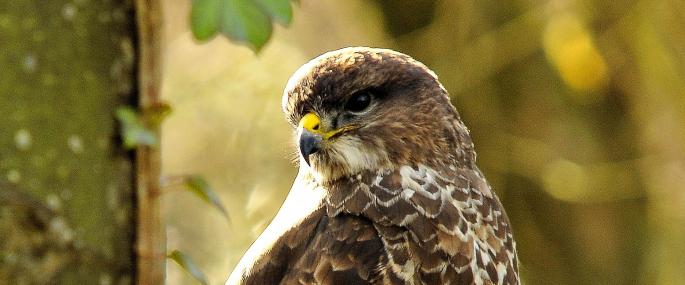Buzzards suffered from persecution and pesticide poisoning in the early 20th century and until recently were only found in the north and west of the country. Over the last couple of decades they have been doing very well and can now be found almost everywhere in the UK. Listen out for their cat-like, 'kee-yaaa' calls as they soar in high circles over grassland, farmland and woodlands. Buzzards eat small birds, mammals and carrion, but will also eat large insects and earthworms when prey is in short supply.
Like many of our birds of prey, the buzzard was severely persecuted in the UK. This species also suffered declines in the 1950s when rabbit populations crashed due to myxomatosis infections. Thankfully, buzzards are a success story - increasing in number and now widespread across the country. To ensure their continued success, The Wildlife Trusts work closely with farmers and landowners to promote wildlife-friendly practices. We are working towards a 'Living Landscape': a network of habitats and wildlife corridors across town and country which are good for both wildlife and people. You can support this greener vision for the future by joining your local Wildlife Trust.
